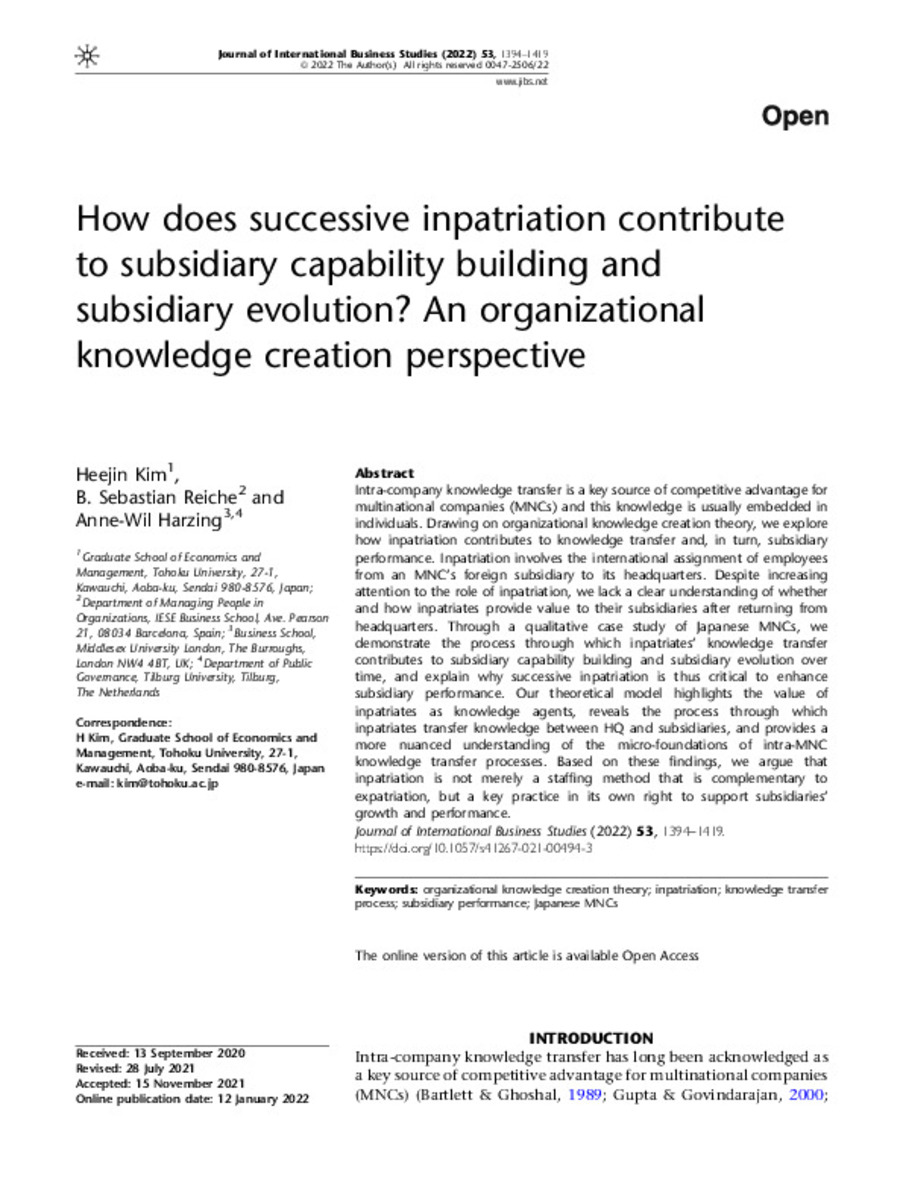How does successive inpatriation contribute to subsidiary capability building and subsidiary evolution? An organizational knowledge creation perspective
Palabras clave :
Organizational knowledge creation theory
Inpatriation
Knowledge transfer process
Subsidiary performance
Japanese MNCs
Fecha de publicación :
12-ene-2022
Nota editorial :
Springer
Nota:
This article is licensed under a Creative Commons Attribution 4.0 International License
Cita:
Kim, H., Reiche, B.S. & Harzing, AW. How does successive inpatriation contribute to subsidiary capability building and subsidiary evolution? An organizational knowledge creation perspective. Journal of International Business Studies 53, 1394–1419 (2022). https://doi.org/10.1057/s41267-021-00494-3
Aparece en las colecciones:
Estadísticas e impacto
0 citas en

0 citas en

Los ítems de Dadun están protegidos por copyright, con todos los derechos reservados, a menos que se indique lo contrario.







